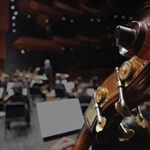Bard College Conservatory of Music
Special Event: “Remembering the Genocide of European Roma during World War II”
Mozart’s Requiem Conducted by Ádám Fischer
October 17, 2014
Bard College Conservatory of Music
October 17, 2014


A special event, conceived by acclaimed Hungarian conductor Ádám Fischer, explores issues of history and responsibility. A panel discussion, moderated by Leon Botstein, includes Fischer and leading figures from the fields of history, human rights, and international law. A performance of the Mozart Requiem by the Bard College Conservatory Orchestra, students of the Bard Graduate Vocal Arts Program, Bard College Chamber Singers, and members of the chorus of the Longy School of Music of Bard College follows.